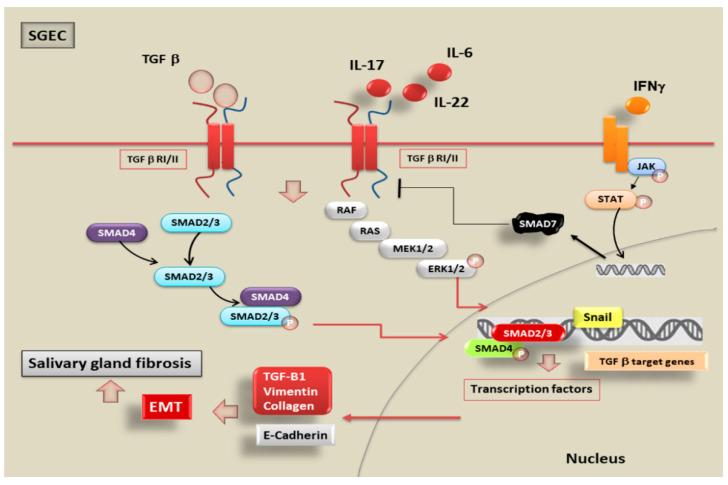Figure 3.
Hypothetical scheme illustrating TGF-β/EMT signalling in SS. TGF-β activates both the canonical SMAD2/3 pathway and the non-canonical MAPK pathway, triggering the EMT process. An inflammatory microenvironment including proinflammatory cytokines such as IL-17, IL-22, and IL-6 may induce EMT through the TGF-β/SMAD and non-SMAD signalling pathways. The activation of transcription factors such as Snail, promotes the prolonged activation of EMT, repressing epithelial marker genes, as E-Cadherin, and activating genes regulating the mesenchymal phenotype, as Vimentin and Collagen Type 1. The epithelial cells trans-differentiated in myofibroblasts are responsible for progressive SG fibrosis. Alternatively, TGF-β can trigger the signals via non-SMAD pathways, such as the MAPK signalling cascade including phosphorylated ERK1/2, that ultimately lead to the activation of the EMT-dependent fibrosis program. An alternative hypothetical mechanism was also showed mediated by IFN-γ that, through the Jak1/Stat1 activation, causes the SMAD7-mediated inhibition of TGF-β signalling.

